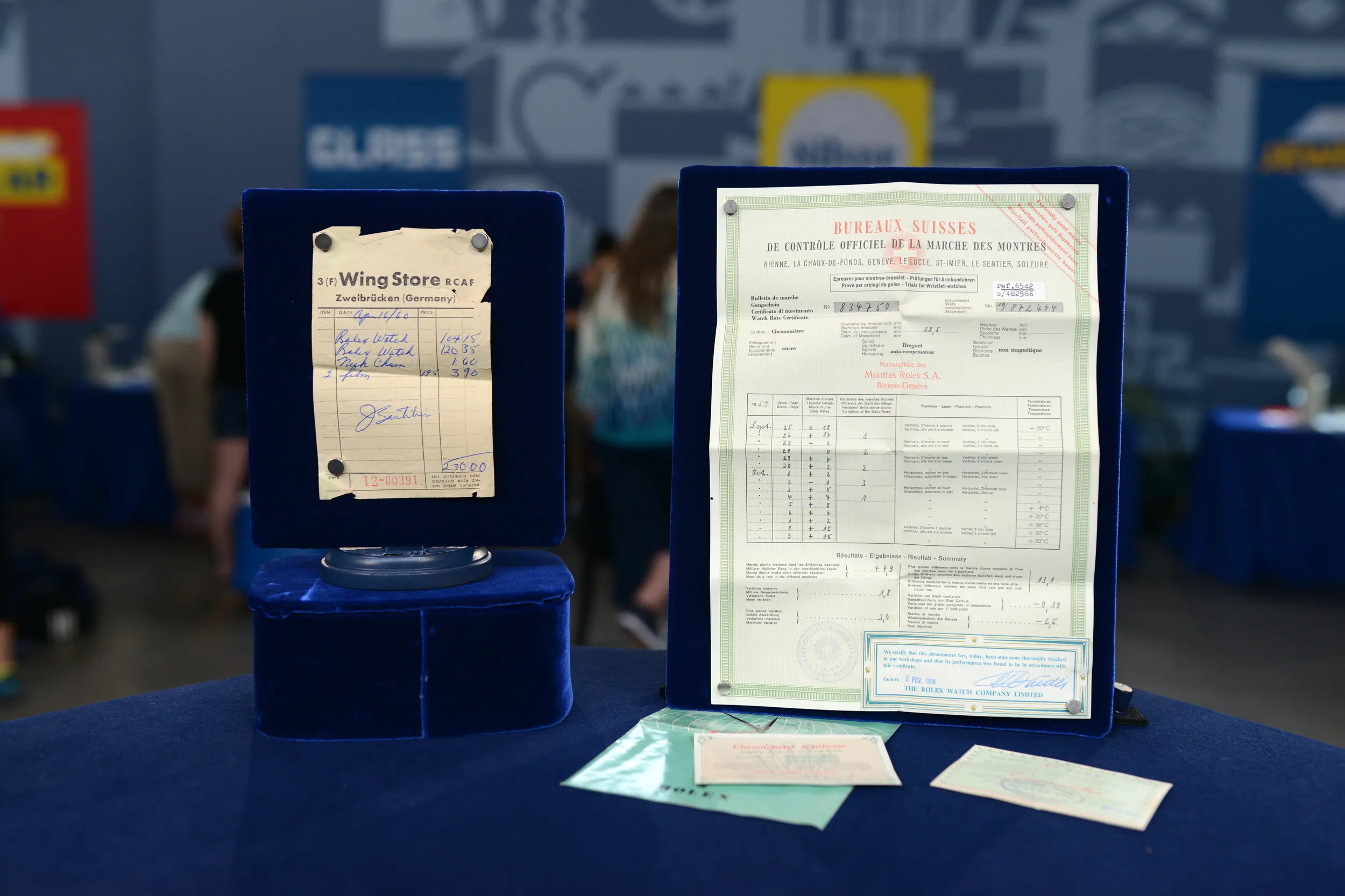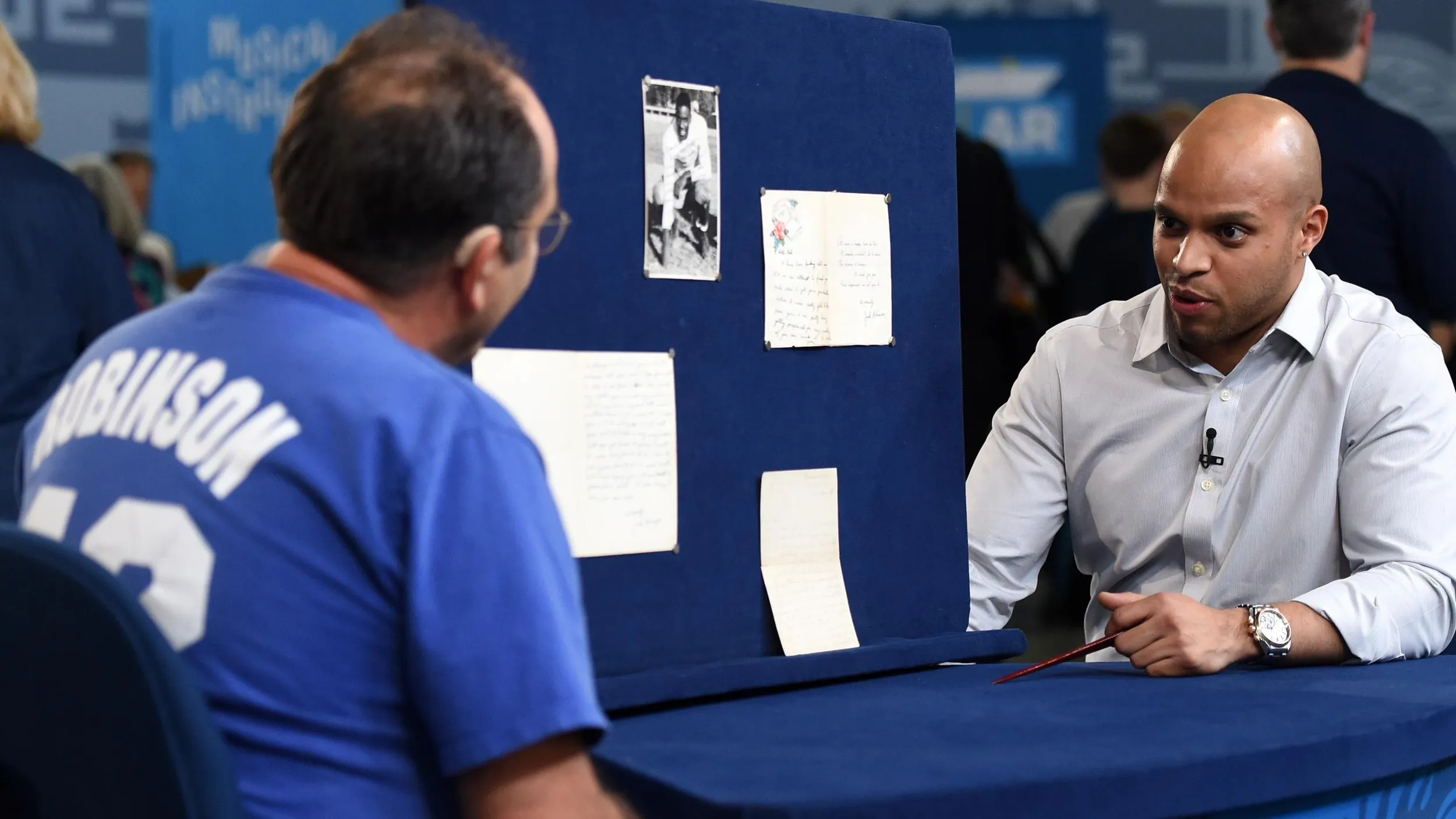GUEST: I brought my Rolex GMT Master that I bought 55 years ago.
APPRAISER: Where did you get it?
GUEST: I bought it in Germany, in Zweibrücken, at a PX when I was in the army over there. I bought the watch just before I came back to stateside. My sergeant recommended that before I came back to the States, buy a Rolex watch.
APPRAISER: Why did he do that, do you know?
GUEST: Well, he liked... he thought it was the best watch ever made. And he said, "Make sure you get one before you go home," and this is the one I liked.
APPRAISER: And had you heard of Rolex before that?
GUEST: Not before that, no. I'd never heard or seen one before. I just took his word that it was a great watch, and it is.
APPRAISER: And do you still wear it?
GUEST: I don't wear it very often now. It's kind of a keepsake now. I wear my cheap watch now, and this is my dress watch.
APPRAISER: Well, I was very excited when you brought this up to the table. As you know, it's a Rolex, it's a GMT Master model. But it's got some very special things about it. It is the first model GMT Master that was ever... Rolex ever made.
GUEST: I didn't know that.
APPRAISER: It's a model 6542, which we have on the reference number on the paper here. On the box itself, on the edge of the box right here, we have the reference number of the watch. It's incredible that you've saved everything. Is there a reason why you saved all this paperwork? We usually don't see this.
GUEST: I don't know. It just... I'm just lucky, I guess.
APPRAISER: Well, this watch is totally complete. You have the watch. I know you've replaced the original bracelet at some point. This is a replacement bracelet. But we do have the original bracelet here in the box, which is also dated that it was manufactured in the first quarter of 1960. And according to the papers of the watch, you purchased it in April of 1960.
GUEST: Correct.
APPRAISER: You have the original sales receipt right here. I notice you bought two watches.
GUEST: Yes.
APPRAISER: We saw the other one. The other one wasn't as special as this one. What did you pay for this watch?
GUEST: This watch I paid the $120. The other watch, which had some gold to the bracelet, I bought for my dad, and I paid $104 for that.
APPRAISER: Was that a lot of money back in 1960?
GUEST: It was a lot of money.
APPRAISER: Yeah?
GUEST: My salary in the army was just under $100 a month.
APPRAISER: Okay, so that was over a month's salary.
GUEST: Yes.
APPRAISER: Do you know what this paper is right over here?
GUEST: No.
APPRAISER: Rolexes were sent to the observatory in Geneva to be certified as chronometers, and that is the original chronometer bulletin that if you look on the left-hand side of it, you'll see the numbers, and they actually timed the watch to tell what timekeeping it kept, plus or minus how many seconds it lost. We also have the original brochure on the watch. Everything's complete. You have the original hang tags. I'm very pleased to tell you that this watch today at auction is a very, very collectible watch. Just the watch on its own merit would be worth today between $35,000 and $45,000. But this watch is worth much more. Because you saved the box and all the paperwork for it, easily today it's $65,000 to $75,000 in the market.
GUEST: Wow.
APPRAISER: Probably more than a month's pay in the military right now.
GUEST: Wow. I had no idea. I'm speechless. If you would have told me $1,500, I would have been happy.





